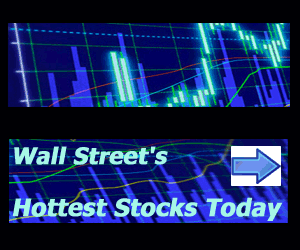Federated Hermes launches active ETF targeting high monthly distributions
Federated Hermes launches active ETF targeting high monthly distributions |
| [08-October-2025] |
PITTSBURGH, Oct. 8, 2025 /PRNewswire/ -- Federated Hermes, Inc. (NYSE: FHI), a global leader in active investing, today introduced Federated Hermes Enhanced Income ETF (CBOE: PAYR), which seeks to deliver to investors distributions from both its underlying equity holdings and net premiums received from call spread writing. Designed to help meet the needs of investors seeking a relatively consistent monthly cash flow and a disciplined approach to managing risk, Federated Hermes Enhanced Income ETF may be a compelling option for income-oriented investors, particularly those in or near retirement, with appropriate risk tolerance. It seeks to deliver high current income with a secondary objective of capital appreciation, pursuing its investment objective by investing primarily in high-dividend-paying common stocks with dividend growth potential along with an options overlay strategy. "Combining a high-quality-dividend portfolio with an actively managed options overlay, Federated Hermes Enhanced Income ETF can serve multiple roles in a portfolio," said John B. Fisher, president and chief executive officer of Federated Advisory Companies. "It provides the opportunity to diversify an enhanced income allocation or to replace a portion of the bond sleeve for investors shifting their allocations as they near retirement." The portfolio managers represent two of Federated Hermes' most tenured and experienced investment teams: Dana Meissner, CFA, FRM, CAIA and Damian McIntyre, CFA, FRM, CAIA from the Multi-Asset Investment Team and Daniel Peris, Ph.D., CFA; Deborah Bickerstaff; Michael Tucker; and Jared Hoff from the Strategic Value Dividend Team. "As interest in ETFs continues to grow, we are dedicated to meeting investor demand by offering ETF versions of our flagship strategies," said Brandon Clark, ETF business director at Federated Hermes. "Federated Hermes Enhanced Income ETF offers risk-conscious, high-cash flow-seeking investors access to the ETF vehicle's tax efficiency, transparency, liquidity and ease of use." As of Sept. 30, 2025, Federated Hermes manages more than $1.2 billion in ETF assets. In addition to the newest ETF, Federated Hermes' active ETFs include:
Federated Hermes, Inc. (NYSE: FHI) is a global leader in active investment management, with $845.7 billion in assets under management, as of June 30, 2025. We deliver investment solutions that help investors target a broad range of outcomes and provide equity, fixed-income, alternative/private markets, multi-asset and liquidity management strategies to more than 10,000 institutions and intermediaries worldwide. Our clients include corporations, government entities, insurance companies, foundations and endowments, banks and broker/dealers. Headquartered in Pittsburgh, Federated Hermes has more than 2,000 employees in London, New York, Boston and offices worldwide. For more information, visit FederatedHermes.com/us. Investors should carefully consider the ETF's investment objectives, risks, charges and expenses before investing. To obtain a summary prospectus or prospectus containing this and other information, contact us at 1-800-341-7400 or visitFederatedHermes.com/us. Please carefully read the summary prospectus or the prospectus before investing. ETFs are subject to risks and fluctuate in value. Diversification does not assure a profit nor protect against loss There are no guarantees that dividend-paying stocks will continue to pay dividends. In addition, dividend-paying stocks may not experience the same capital appreciation potential as non-dividend-paying stocks. The value of equity securities in the fund's portfolio will fluctuate and, as a result, the fund's share price may decline. Equity securities may decline in value because of an increase in interest rates or changes in the stock market. The fund's use of derivative instruments involves risks different from, or possibly greater than, the risks associated with investing directly in securities and other traditional instruments. The fund is a new fund that recently commenced operations. New funds have limited operating histories for investors to evaluate and new funds may not attract sufficient assets to achieve investment and trading efficiencies. While stocks have higher return potential, they may be more volatile than bonds. Writing option contracts can result in losses that exceed the seller's initial premium collected and may lead to additional turnover and higher tax liability. ETFs are generally more tax efficient than traditional mutual funds due to their structure. When investors redeem shares, ETFs can do so in-kind, meaning they exchange shares for underlying assets without triggering capital gains taxes for remaining investors. ETFs often distribute fewer capital gains to investors compared to mutual funds, leading to lower tax liabilities. As part of the fund's investment objective, the fund seeks to distribute current monthly income. As a result of market, interest rate and other circumstances, the amounts of such distributions may vary widely from month to month and in some months no distribution may be paid at all. There is no assurance that the fund will make a distribution in any given month. Distributions in excess of the fund's current and accumulated earnings and profits will be treated as a return of capital and a significant portion of the fund's distributions at any point in time may consist of return of capital. A return of capital distribution generally will not be taxable currently but will reduce the shareholder's cost basis and will result in a higher capital gain or lower capital loss when those fund shares on which the distribution was received are sold. ETF shares are bought and sold on an exchange at market price (not NAV) and are not individually redeemed from the fund. However, shares may be redeemed at NAV directly by certain authorized broker-dealers (Authorized Participants) in very large creation/redemption units. Shares may trade at a premium or discount to their NAV in the secondary market. Brokerage commissions will reduce returns. Market price returns are based on the official closing price of an ETF share or, if the official closing price isn't available, the midpoint between the national best bid and national best offer ("NBBO") as of the time the ETF calculates the current NAV per share. NAVs are calculated using prices as of the end of regular trading on the New York Stock Exchange (normally 4:00 PM Eastern Time). Federated Securities Corp.is Distributor of the Federated Hermes Funds. # # #
SOURCE Federated Hermes, Inc. | ||
Company Codes: NYSE:FHI,NYSE:FCSH,NYSE:FHYS,NYSE:FLCC,NYSE:FLCG,NYSE:FLCV,NYSE:FSCC,NYSE:MKTN,NYSEArca:FDV,NYSEArca:FTRB |


















